Lymphocytes are a type of white blood cells. They are crucial in forming and regulating the human immune (defense) system. The immune system is one of the most complicated arrangements inside the human body. Its characteristic feature is that it can evolve to provide the highest possible shield for the human body from diverse germs.
Lymphomas are a large group of cancer diseases originating from the lymphatic system. The lymphatic system consists of:
Lymphocytes are divided into many subtypes, each performing a specific function in this precise mechanism. Lymphocytes, like other blood cells, are formed in the bone marrow. But unlike them, after leaving the bone marrow and entering the blood, they must undergo further stages of maturation, during which they acquire the characteristics necessary for their functions.
Some lymphocytes go to the thymus gland, some to the lymph nodes, and in further stages, some occupy other human organs (e.g., digestive or respiratory systems).
Lymphoma develops when, due to some error in the formation or maturation of a lymphocyte, it becomes a cancerous cell. It then begins to multiply excessively in the place where it is located (usually in a lymph node). Then, cancer cells can move to other organs (e.g., to other lymph nodes). Sometimes, the initial lesion is so large that it infiltrates neighboring organs (e.g., lymphoma in the chest's lymph nodes may infiltrate the respiratory system's structures, such as the lungs).
Lymphomas are malignant cancers, which means that the process described above will continue to progress and will not regress on its own. There are many types of lymphomas, which result from the fact that they arise from different kinds of lymphocytes and various stages of their maturation. Lymphomas differ, among other things, in the speed of the course of the disease.

Among lymphomas, the following are distinguished:
Considering the dynamics of the disease development, non-Hodgkin lymphomas can be divided into:
Hodgkin’s lymphoma (HL) is a cancer affecting lymph nodes and lymphatic tissue. In this type of disease, B-lymphocytes are the ones starting abnormal multiplication. The most common symptom is a painless enlarged lymph node (usually under the armpit, neck, or groin).
HL has been classified as a separate group of diseases due to the presence of Reed-Sternberg cells![]() , responsible for attracting other white blood cells.
, responsible for attracting other white blood cells.
The exact causes of Hodgkin's disease are unknown, but the Epstein-Barr virus (EBV) is often mentioned as one of the factors of its development.
The incidence of this type of cancer in the US is 2 per 100,000 people![]() . Young adults aged 20-30 and over 50 are most often affected. It affects slightly more men than women. It is the 26th most common cancer in the United States
. Young adults aged 20-30 and over 50 are most often affected. It affects slightly more men than women. It is the 26th most common cancer in the United States![]() , so it is rare.
, so it is rare.
Hodgkin's disease has a high percentage of complete cures – 5-year survival rate is 89%![]() .
.
The group of non-Hodgkin's lymphomas includes many cancers, differing in the exact cells from which they originate and in the course of these diseases.
This type of disease is more frequent than Hodgkin’s lymphoma- the incidence in the US is 18 per 100,000 people![]() . It is the 8th most common
. It is the 8th most common![]() cancer in the United States.
cancer in the United States.
The most common group of non-Hodgkin's lymphomas are diffuse large B-cell lymphomas (DLBCL), originating from mature, peripheral B lymphocytes. DLBCL accounts for about 30%![]() of all non-Hodgkin’s lymphoma cases.
of all non-Hodgkin’s lymphoma cases.
Among non-Hodgkin's lymphomas, two additional groups![]() can be distinguished:
can be distinguished:
They have a mild course associated with many years of survival without treatment. They often do not require starting treatment – however, systematic control of lymph nodes and blood tests (“wait and see”) is required.
The indication to start therapy may be the appearance of general disease symptoms (fever, sweats, weight loss), significant enlargement of lymph nodes, spleen, and liver, and involvement of the bone marrow, which may be manifested by anemia and low platelets.
In some patients, transformation into a more aggressive lymphoma is observed after a different disease duration.
The most common indolent lymphomas are:
Aggressive lymphomas grow rapidly and cause severe symptoms. They also spread fast. This group includes:
People with aggressive lymphomas require prompt diagnosis and intensive treatment.
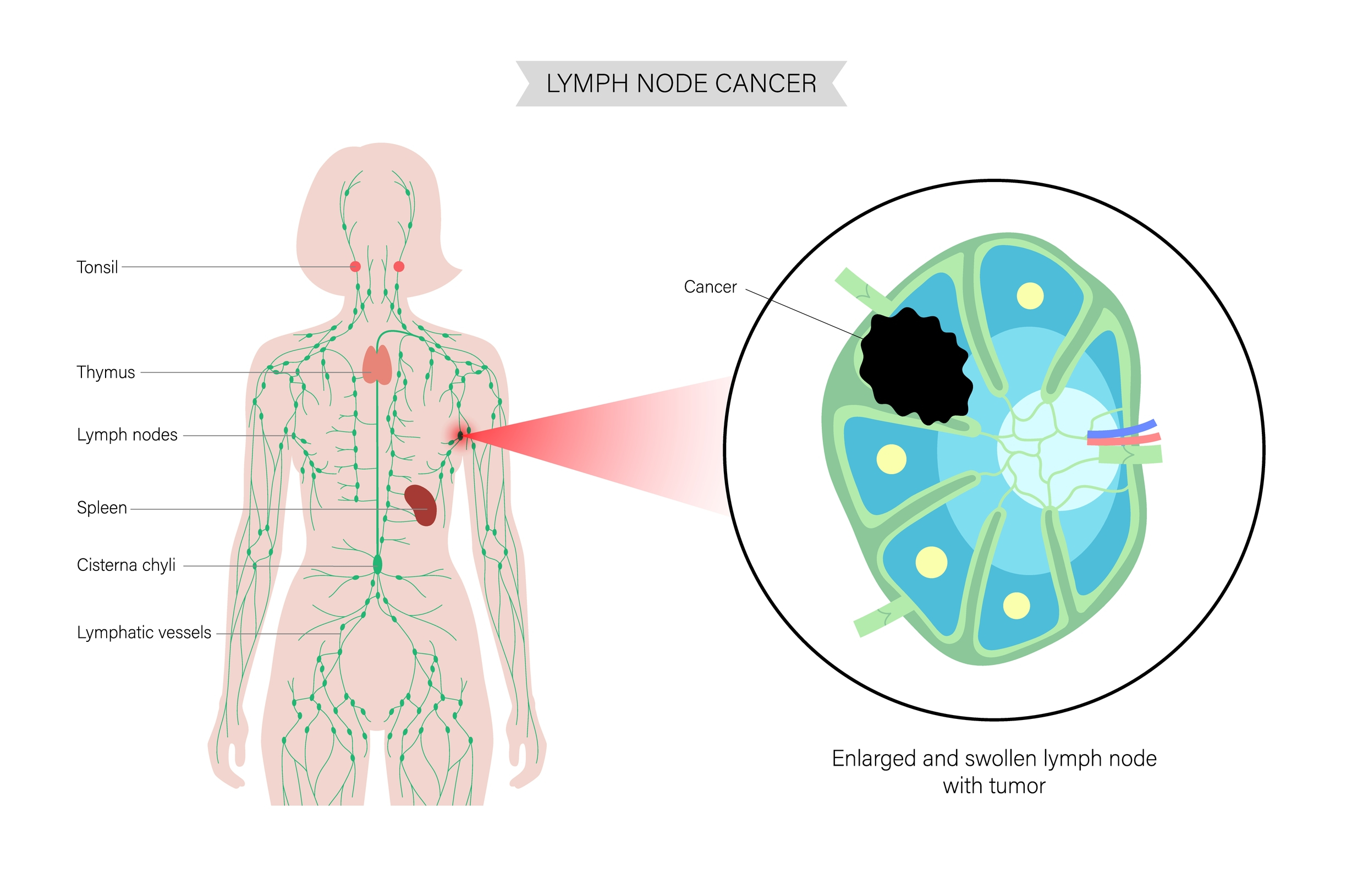
Lymphoma in the early stages may not give clear and visible symptoms, so it is easy to miss the beginning of the disease. Early symptoms may resemble the common cold, but what should be of concern is the persistent enlargement of lymph nodes throughout the body.
Early symptoms of lymphoma include:
Suppose the above symptoms persist for more than 14 days. In that case, it is worth visiting a doctor who will order detailed diagnostic tests. The sign that should primarily concern you is the enlargement of the lymph nodes that persists for more than a dozen or so days.
Lymph nodes are tiny structures that are numerous throughout the body. They play a vital role in controlling the human immune system.
Lymph nodes can be compared to checkpoints to which information about germs (viruses or bacteria) in the area flows. If such a signal arrives, it stimulates the lymphocytes in the lymph node to start and conduct an immune response to fight the infection. Therefore, in most cases, lymph node enlargement is related to an inflammatory response to an ongoing nearby infection. However, enlarged lymph nodes can also be an early sign of cancer (lymphoma or cancer metastasis), so it is worth knowing when such a situation should be consulted with a doctor.
Normal nodes are about the size of a pea. If such small structures are palpable, they should not cause concern. However, most often, normal nodes are not palpable. Lymph nodes are considered enlarged if they are above 2 centimeters![]() . Then, they are considered to be worrying.
. Then, they are considered to be worrying.
Other features you should pay attention to are whether the nodes can be moved or are immobile (immobile nodes may indicate a cancer process) and whether the area and the node itself are red and painful (indicates inflammation).
As with all cancers, lymphomas are caused by a mutation in the DNA of a cell, in this case, a white blood cell (lymphocyte).
In the case of lymphoma, it is tough to identify clear reasons for the mutation because there are usually several causes of lymphoma. There are risk factors![]() that may increase the chances of getting the disease:
that may increase the chances of getting the disease:
The reasons for the development of lymphomas vary depending on the type of cancer of the lymphatic system.
The basis for the diagnosis is the histopathological evaluation![]() of the lymph node or other affected tissue. This means the doctor biopsy the affected tissue (cuts out part of it) and examines it under a microscope. This procedure is carried out under the local anesthesia. The presence of Reed-Sternberg cells and Hodgkin cells characterizes Hodgkin's tumor. Medical experts can make use of histopathologic assessment to identify the type of lymphoma – a crucial factor in both the diagnosis and treatment selections.
of the lymph node or other affected tissue. This means the doctor biopsy the affected tissue (cuts out part of it) and examines it under a microscope. This procedure is carried out under the local anesthesia. The presence of Reed-Sternberg cells and Hodgkin cells characterizes Hodgkin's tumor. Medical experts can make use of histopathologic assessment to identify the type of lymphoma – a crucial factor in both the diagnosis and treatment selections.
The tests involve a thorough blood check to determine the levels of white and red blood cells and platelets. Additional tests are conducted to examine the performance of organs like the liver and kidneys.
Imaging tests are extremely important- these tests allow the doctor to tell if cancer has spread. Typically, scans that are used include:
In some people, a bone marrow sample is needed to determine if the cancer is spreading to the bone marrow. The medical professional punctures the pelvis with a long needle to extract the bone marrow. This procedure is performed under local anesthesia.
All the tests mentioned above are essential not only because they allow doctors to make a final diagnosis but they also allow you to determine how advanced the disease is.
For this purpose, the Ann Arbor classification is used, which distinguishes four stages of lymphoma:
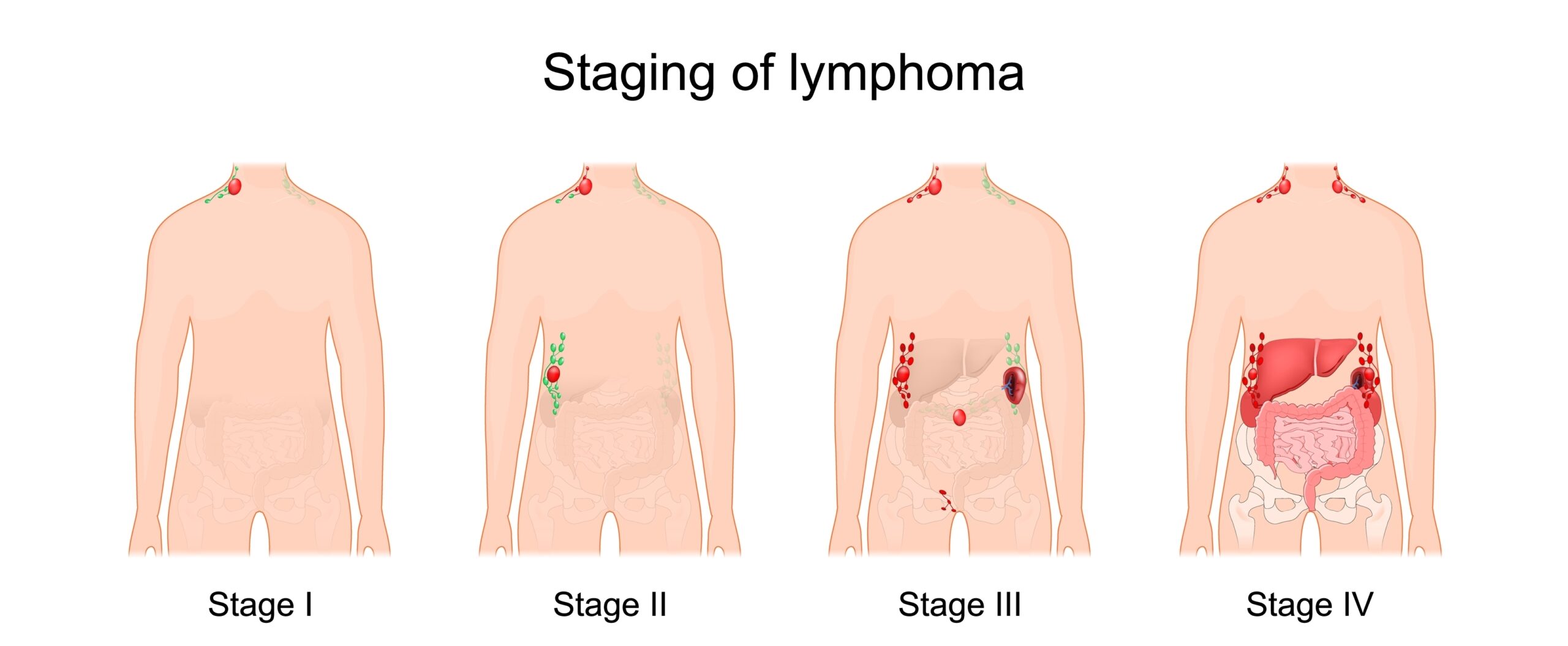
There are two main methods used to treat lymphoma: chemotherapy and radiotherapy. However, not all patients diagnosed with the disease receive treatment right away. Whether treatment is started depends on the type of lymphoma diagnosed.
In the case of the low-grade cancers listed above, the diagnosis is often made accidentally – the patients are usually of elder age and may not have any general symptoms.
Here, the “wait and see” approach![]() is often used – the basis for this approach is that the patient is under constant observation of doctors, and treatment is implemented only when the disease progresses.
is often used – the basis for this approach is that the patient is under constant observation of doctors, and treatment is implemented only when the disease progresses.
Such behavior is not a lack of care for the patient – indolent lymphomas develop for many years, and it is difficult to cure them completely. Additionally, chemotherapy treatment can sometimes bring more negative effects than benefits, so it is started only when needed.
Aggressive and very aggressive lymphomas are treated differently. In their case, therapy is started as soon as possible. Although these diseases can have a rapid course (significant enlargement of lymph nodes can occur in just a few days), these tumors are often very sensitive to chemotherapy, which is associated with the effectiveness of the therapy.
Like any disease, lymphoma and its treatment can carry some complications![]() .
.
A typical symptom of lymphoma is a weakened immune system, which can get worse as you go through treatment. However, after treatment, the body slowly recovers the immune system.
Infertility is a chemotherapy or radiotherapy complication, which can be temporary but sometimes permanent. People who undergo this treatment sometimes freeze their sperm or eggs to ensure they can try for babies in the future.
Cancer treatment also increases the risk of a second, other type of cancer developing in the future. This is because chemotherapy and radiotherapy affect not only cancer cells but also body cells.
The type of disease determines the prognosis of a patient with lymphoma.
Patients with indolent non-Hodgkin's lymphoma rarely have a chance of a complete cure. Although they can reach remission, the disease may recur in the future. However, the survival time in these types of cancer, even without treatment, may be as long as several years from the diagnosis of the disease.
In the case of aggressive non-Hodgkin's lymphoma, complete recovery is more possible than in the case of slow-progressing cancers. This happens because the cells of aggressive lymphomas are more susceptible to therapy.
In regards to Hodgkin's lymphoma, there is a chance for a lasting recovery in nearly 90%![]() of individuals diagnosed with this condition.
of individuals diagnosed with this condition.
If you notice any signs that could indicate lymphoma, like swollen lymph nodes, sweating at night, ongoing fevers, or unintended weight loss, it is important to reach out to your doctor right away. While these symptoms may also be associated with less severe conditions like the common cold, it is advisable to seek guidance from a healthcare provider.
A medical professional known as a hematologist specializes in diagnosing and managing blood and lymphatic system diseases.
Table of Contents

Swollen lymph nodes often occurs as a result of upper respiratory tract infections or infectious diseases. What are the symptoms?… read more »
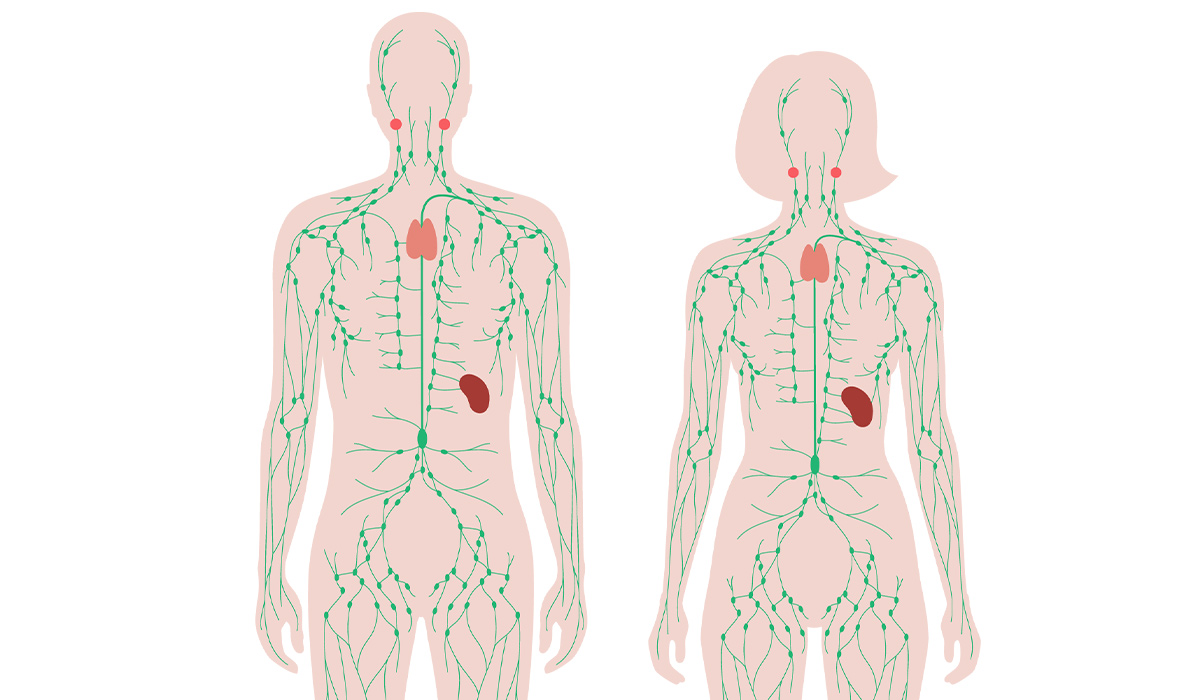
The human lymphatic system is an important support for the immune, circulatory and even digestive systems. What are its functions?… read more »
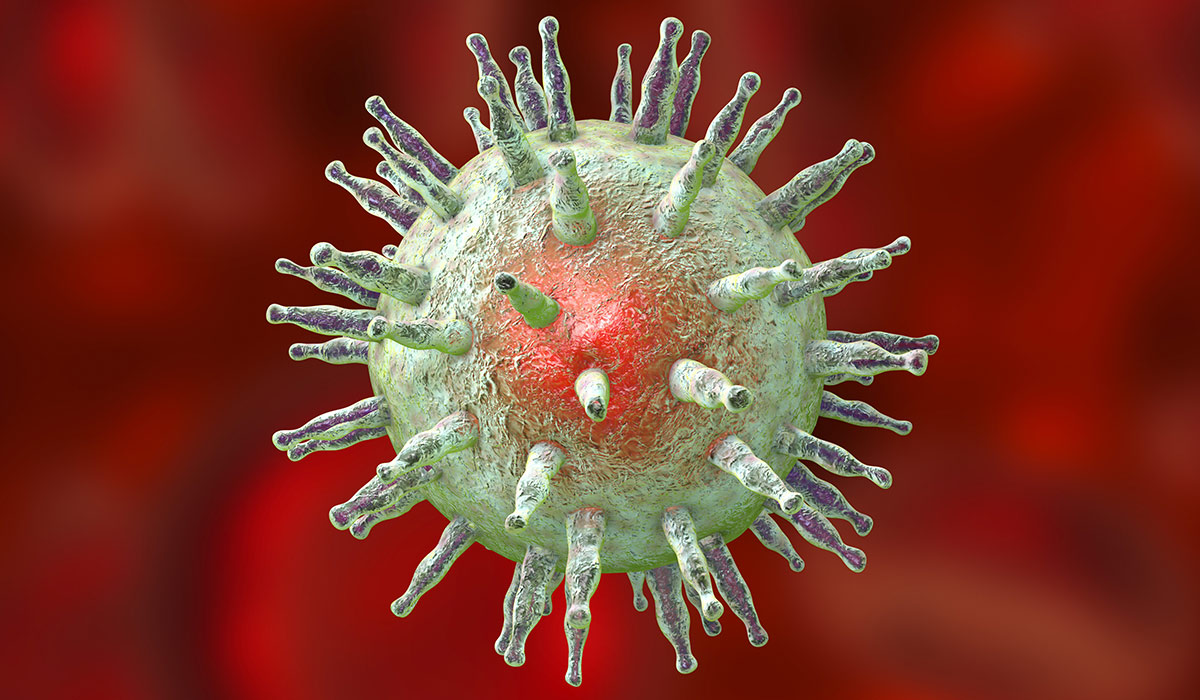
Epstein Barr Virus is a pathogen that causes infectious mononucleosis and many other diseases. Learn about the risks associated with… read more »
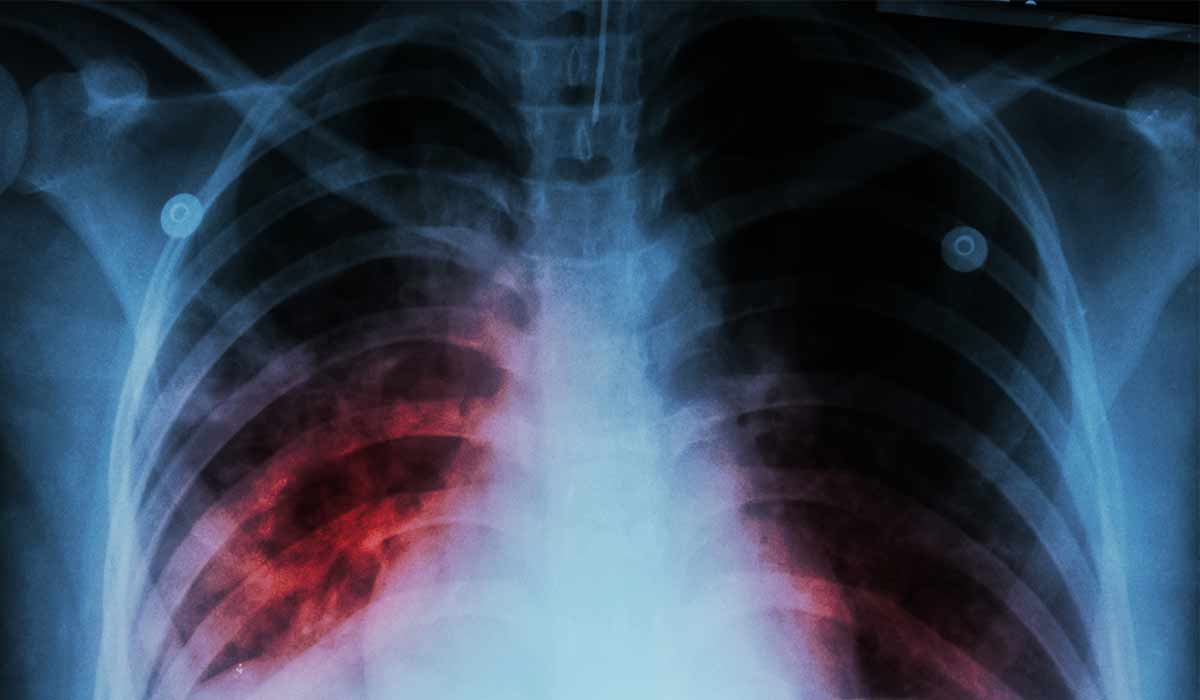
Tuberculosis is an infectious disease caused by mycobacteria. There are many types of tuberculosis with varying symptoms. Learn it all… read more »
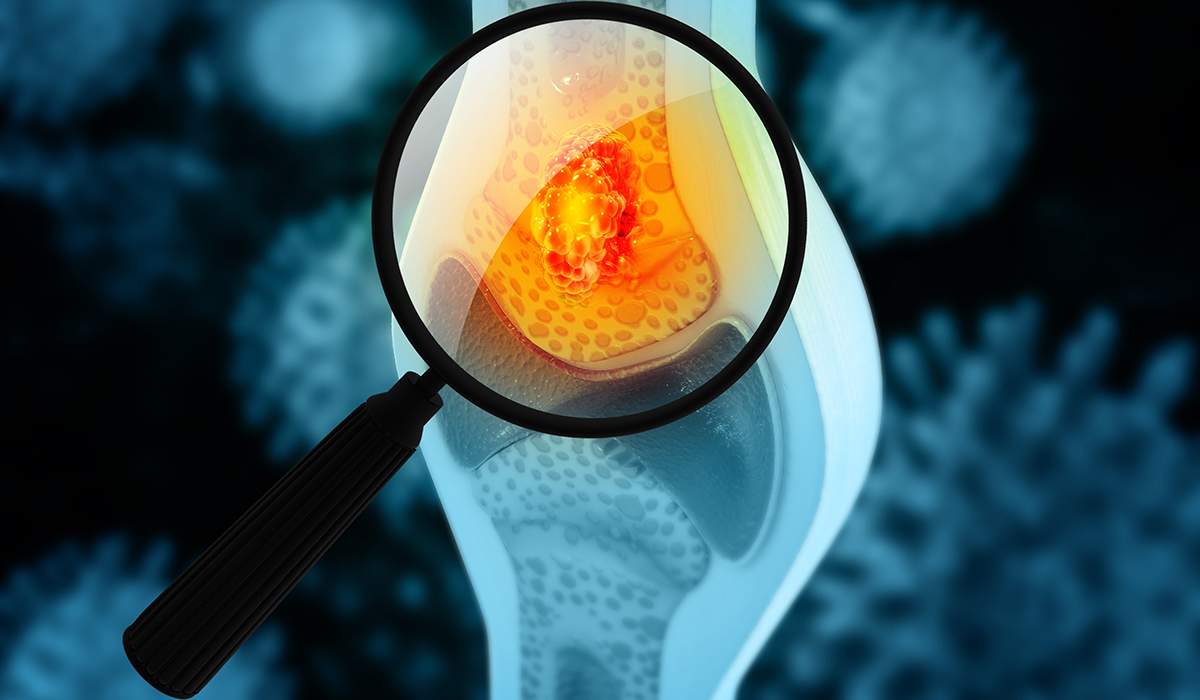
Bone cancer is a disease in which cancerous lesions develop in bone tissue. It can be primary or a result… read more »

Rubella is an infectious disease caused by a specific type of virus. It is most commonly diagnosed in children. Find… read more »

Lyme disease is difficult to diagnose. Therefore, it often goes undiagnosed for years, leading to complications. If you want to… read more »
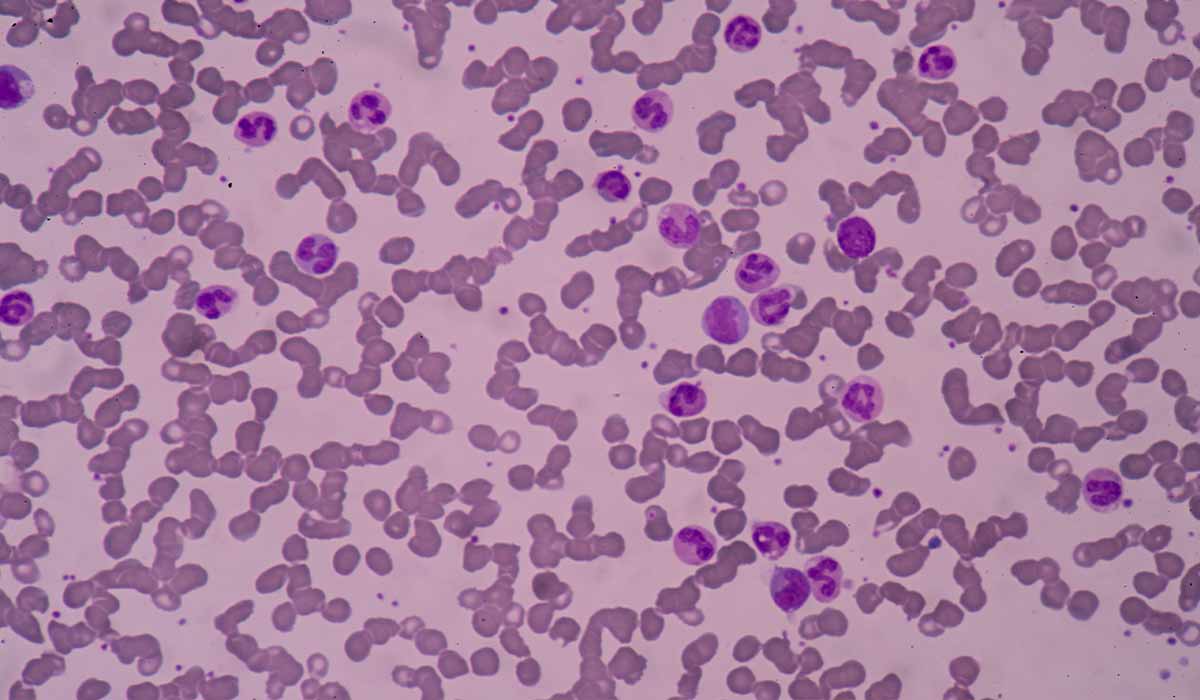
Leukocytosis is a condition in which the upper norm for white blood cells is exceeded. What are its symptoms and… read more »
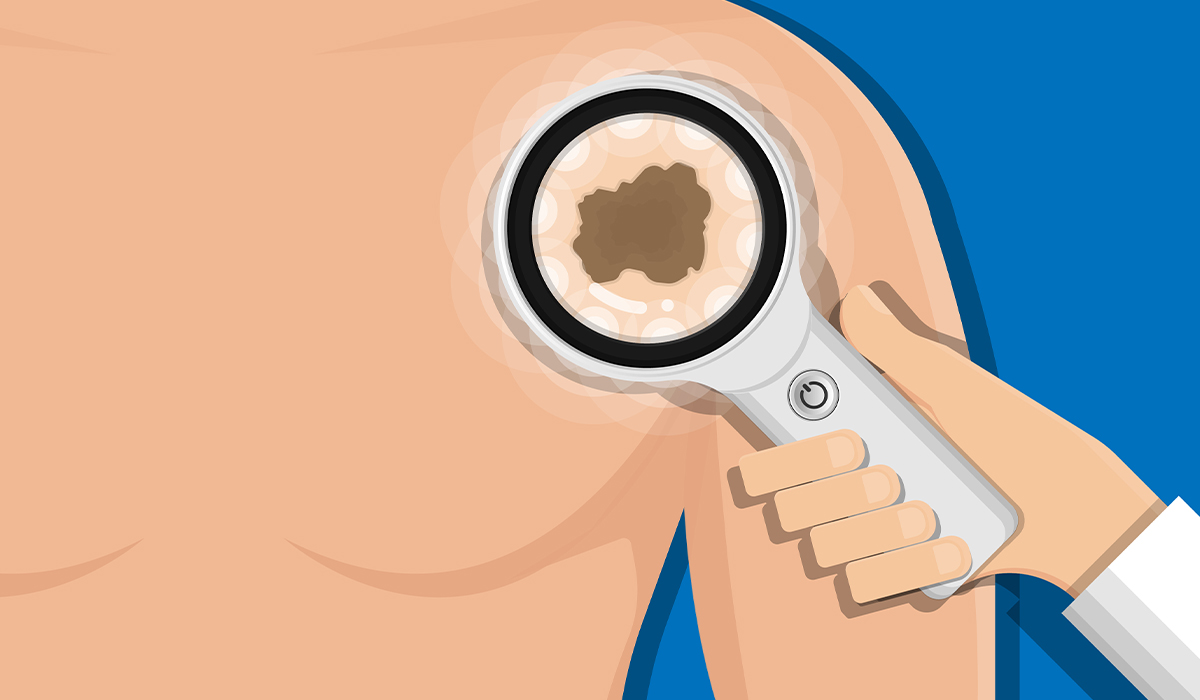
Squamous Cell Carcinoma is a type of skin cancer that comes from the squamous cells in the top layer of… read more »